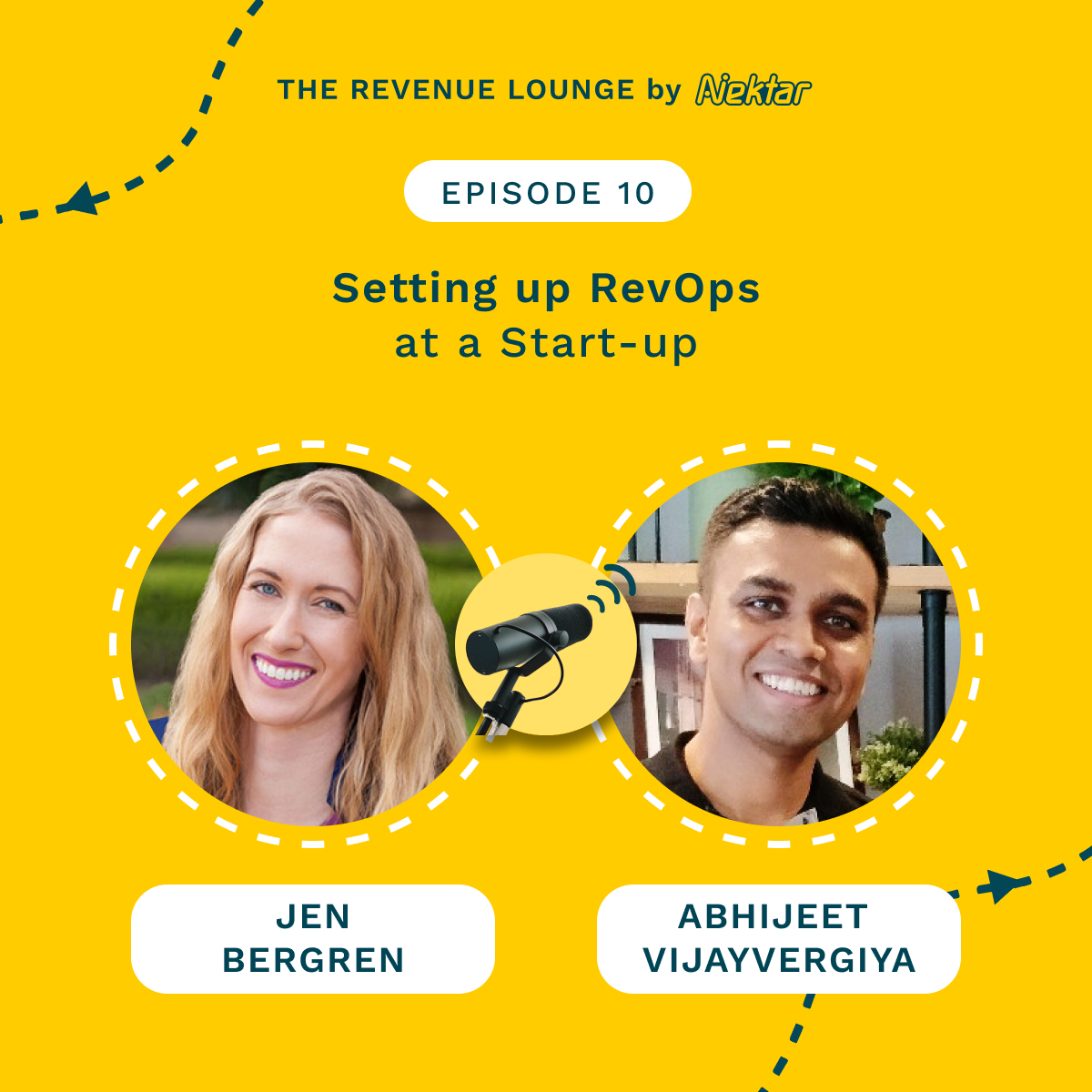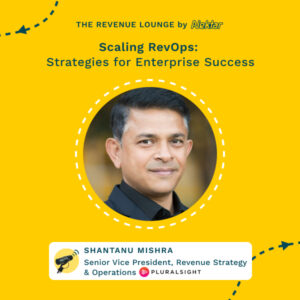Using AI to Supercharge RevOps ft. Stephen Smith
March 13, 2024
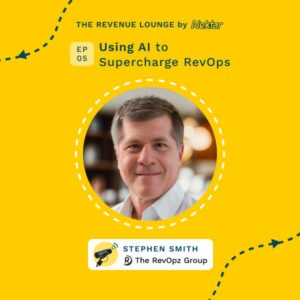
About
The Revenue Lounge
The podcast covers stories from leaders across RevOps, Sales, Customer Success, GTM, Data and Marketing about what drives these functions and what advice they would share with our listeners. With 3 seasons recorded, the podcast currently features 50+ enterprise leaders in the B2B SaaS domain. Tune in to hear from the best in the business
In this podcast episode, Stephen Smith talks with Steven Smith about AI in revenue operations and RevOps best practices. Steven shares his expert insights on the impact of AI on RevOps and key areas for improvement. Listeners can expect to learn how AI is transforming analytics, reporting, forecasting, and more across the revenue function.
Guest Bio:
Stephen Smith is the founder of The RevOps Group, a consulting firm focused on helping companies optimize their RevOps practice and leverage AI. He has extensive experience leading high-growth RevOps teams, including at DailyPay and 8×8.
Top Discussion Points:
– The definition and scope of a modern RevOps team (aligning sales, marketing, customer success)
– Major areas where AI can enhance RevOps: analytics, sales forecasting, enablement, data hygiene
– Challenges to effectively implement AI in RevOps
– Emerging AI tools/platforms showing promise for revenue teams
Key Quotes:
“AI is going fundamentally change so many different parts of the of the RevOps organization” (00:07:45)
“The age of opinion is gone. Everything that rev ops organizations and marketing ops organizations are now doing, Right? It’s all based on the data.” (00:25:36)
“It’s people using AI tools are gonna basically replace people that that aren’t using them.” (00:23:52)

[00:00:07] Jordan Zornes: Welcome to today’s episode of the revenue lounge. And with us today, we have Steven Smith. Steven headed up and founded the RevOps Group, formerly from DailyPay and has a rich history in RevOps. Steven, welcome to the show.
[00:00:21] Stephen Smith: Thank you. Happy to be here.
00:00:25 Interview with Stephen Smith on RevOps Group and AI Impact
[00:00:25] Jordan Zornes: Why don’t we start by having you tell us a little bit about yourself and your current your current role in the RevOps Group?
[00:00:32] Stephen Smith: Sure. I’ve been in senior RevOps roles for a bunch of years. And, recently, I founded a company called the RevOps Group, which is a consulting firm, really focused on helping companies level up their rev ops organizations and to really also start to understand the impact of of AI on those organizations. So I’ve been in rev ops for a long time. Prior to starting the rev ops group, I was the leader at DailyPay, which is a really fast growing Fintech focused on earned wage access.
[00:00:58] Stephen Smith: I had a team, traditional to most rev ops leaders, that had the sales and marketing tech stack, sales excellence, strategy and operations, the BDR team, marketing ops, channel ops, things like that. And before that, I was an SVP at 8 by 8 in RevOps, a cloud based communication company doing very similar things. I’ve been a consultant for a long time. I’ve been an operations leader for a long time. So leading RevOps was just a natural extension of a lot of things I’ve done over my entire career.
[00:01:26] Jordan Zornes: Awesome. And, would would you say that rev ops was something you grew up and thought you wanted to do, or was that something that blossomed over the years?
[00:01:35] Stephen Smith: It’s a good question. It’s something I don’t wanna say I fell into it because I think it was a natural extension of the things I was doing, Jordan. Right? I’ve been doing, like I said, analytics, consulting, and building models, and and really working with a lot of sales teams and figuring out how sales can, you know, basically better execute on the things that they were doing. And so through a lot of the consulting work I did, I basically started working with sales teams, analytics teams, BDR teams, marketing organization, and really got a good picture of how that all came together.
[00:02:03] Stephen Smith: Plus, I was a CFO for 6 years, so I really understood the importance of revenue in the organization. And so it really was something that I evolved into. I wouldn’t say early in my career. I mean, look. RevOps hasn’t been wasn’t around as a term when I started my career.
[00:02:15] Stephen Smith: It’s a relatively new term in the organization. Of course, sales ops was, but it’s something that I I would say I evolved into just through the natural things that I did in a long career.
00:02:25 Defining Revenue Operations with Stephen Smith
[00:02:25] Jordan Zornes: That’s a great point. We were recently working with a a senior sales leader and made the point that prior to 2008, CRO didn’t exist. And
[00:02:34] Stephen Smith: That’s true. Yeah.
[00:02:36] Jordan Zornes: Quickly went from sales ops and now rev ops. That’s a great point. Yep. So on that, how would you, define revenue operations?
[00:02:45] Stephen Smith: It’s funny because you can go out there and you can see a lot of different terms. I mean, the way I think about it, honestly, it’s really around maximizing the company’s revenue potential, right, by aligning the sales organization, the marketing organization, customer success around the entire customer life cycle. Right? It’s around driving, you know, you know, ultimate outcomes, as one of my my friends likes to say. And so it’s really bringing those teams together to make sure that the entire go to market motion is aligned to make sure that the customer is successful and that we can actually successfully deliver value to them.
[00:03:15] Stephen Smith: So that’s how I think about rev ops is bringing those internal teams together. And one thing I wanna note that a lot of people don’t think about, when I think about rev ops, I think about the importance of the finance team as well and them as part of that process. Right? So you traditionally don’t run a finance organization, but having deep ties with that organization is super critical. Right?
[00:03:33] Stephen Smith: It’s one of the most important things I think you can do.
00:03:36 Exploring the Shifting Dynamics of Revenue Operations in Companies
[00:03:36] Jordan Zornes: Yeah. And and this question’s off script on that note. We’ve noticed a kind of movement where rev ops is maybe getting shifted actually into the finance team, especially smaller companies. Have you seen much of that? Or
[00:03:50] Stephen Smith: I haven’t seen that personally. I mean, I’ve seen RevOps reporting, you know, most traditionally to a CRO or a chief customer officer. I have talked to a couple organizations lately where they’re actually putting it under a president or a COO also. But in the case where they talked to the company with the COO, they also had the finance function reporting up to them as well. So I personally haven’t seen a Jordan reporting to finance specifically, but I could imagine it’s happening.
[00:04:13] Stephen Smith: And one of the reasons is I think a lot of the kinds of financial analysts that you would get out of a finance team would do very well on a rev ops team. Right? The kind of analytics they do are very similar, understanding the customer life cycle, understanding customer lifetime values. So the core skill sets would be very similar and very much the same. So I could see that going back and forth.
00:04:32 The Role of Finance in Revenue Operations
[00:04:32] Stephen Smith: I just personally haven’t seen it report up to a a CFO yet.
[00:04:36] Jordan Zornes: Yeah. Yeah. And it could just be local here in Seattle. I I Yeah. We’ve seen these directors of GTM finance get really into analyzing SQLs and killed us in, and really start to get into the weeds of what goes on in RevOps, what goes on in Salesforce.
[00:04:54] Stephen Smith: So one of the things that I think, Jordan, is really important is that everyone in an organization really understands, you know, what an MQL is, what an SAL is, what an SQL is, and they measure things the right way. So in the last couple of companies I’ve been at, I’ve made sure that the the marketing team is measuring it the same way. The finance team is measuring it the same way. So, actually, having a finance team that really understands that and is deeply engaged in that, to me, it’s super important because, look, I want them as a leader, as part of that planning process, I want them to understand it. When we talk about building pipeline and making this stuff happen, right, that they’re as deeply understanding of the entire process and what has to happen as as in one of the web ops is.
[00:05:32] Jordan Zornes: Yeah. Yeah. Yeah. That’s a great point. And I’m gonna transition back into the the next question on our list here is on AI.
00:05:40 Bringing Together Marketing Ops, Sales Ops, and CS Ops in a Rev Ops Group
[00:05:40] Jordan Zornes: But as you talked about bringing those different teams together and especially through that financing lens
[00:05:46] Jordan Zornes: As we think about marketing ops, sales ops, CS ops, has
[00:05:51] Jordan Zornes: Has there been one in your experience that’s kind of the dominant leading group that defines the overarching mission of a rev ops group? Or is there I guess what I’m asking is, where have you seen the most difficulties bringing marketing ops, sales ops, and CS ops together?
[00:06:08] Stephen Smith: Well, that’s a great question. I’m not sure I would describe it in terms of difficulties. I I think what I found in the organizations that I’ve worked with across the years, including very large tech companies, is there’s usually a very strong analytics component in the traditional sales ops, rev ops organization. Right? You typically got some pretty good analytic capabilities there.
[00:06:28] Stephen Smith: You’ve got solid capabilities typically in marketing ops, but they’re focused on different kinds of things. Right? So that’s why, again, getting that common language is really important. What I don’t see is is common is having, you know, deep analytic capabilities necessarily in the CS organization. So So in the last couple of organizations I’ve worked with, we’ve actually I don’t wanna say lent them our analytic resources, but we really helped them build those capabilities out and done that stuff.
[00:06:50] Stephen Smith: So to me, in bringing it together, it’s building that common framework, and it’s helping them do that. So they’re deeply immersed again and make sure the customers realize the value once the customer is, you know, starting to get implemented and onboard and and realizing those outcomes over time. But, again, they they don’t have the analytic chops, again, just from what I’ve seen traditionally. So in bringing it together, that’s what I would say is one of the most important things to focus on.
00:07:12 AI’s Impact on RevOps Function
[00:07:12] Jordan Zornes: Yeah. Okay. That was a great answer. Thank you. That’s a great segue into as we talk about AI and rev ops, what’s your take on AI helping to enhance the rev ops function?
[00:07:26] Stephen Smith: I am a huge proponent of teams using AI. Right? It it is gonna fundamentally change so many different parts of the of the RevOps organization, Jordan. So from an analytics standpoint alone, right, so most people use ChatGPT or Quad or Bard or something, and they ask you questions. Right?
[00:07:45] Stephen Smith: There’s some advanced features in ChatGPT. One of them is called code interpreter, where you can actually have it help you do very, very detailed analytics. Right? You can upload spreadsheets and say, help me identify the trends, or compare this spreadsheet to this spreadsheet, or help me do some hygiene cleaning on some of this data, like some of the tools that are out there. Right?
[00:08:02] Stephen Smith: So there are many ways that I think AI is gonna definitely help improve rev ops organizations. Thinking about, like, in the BDR organization, for example, It can dramatically help with customers outreach customer outreach. Right? It can help them understand who the customer is, where they are in the buyer’s journey. It can help give them some talking points around how our solution can best help them.
[00:08:22] Stephen Smith: Right? It can help the BDR. It can help the sales executive. Right? It can do you can actually through some of, like, the enablement tools, you can understand what their tone is, how well they’re following the script.
[00:08:31] Stephen Smith: There’s a lot of different ways that it’s gonna that AI is gonna get used. On the marketing side, you can help actually create content. So there is in my view, there’s no part of the rev ops teams today that’s gonna be untouched by AI in the next couple of years. We’re just seeing the beginning of how it’s gonna get used, and it’s gonna be incredible. It’s gonna be it’s gonna make incredibly incredible people very productive.
[00:08:52] Jordan Zornes: I agree. And I’d I’d need to use that, that analyze scripts and analyze, spreadsheets function. I that’s what I haven’t used.
[00:09:01] Stephen Smith: It it it’s it’s really amazing. I actually I started a substack, and maybe we can include the link of it, like, at the end of the podcast or in the notes. But I write about strategy and rev ops, and I’ve written a number of articles about how AI is gonna actually impact rev ops organizations. So go check it out. I put examples in there.
[00:09:17] Stephen Smith: I actually walk people through how to use some of this how to use some of these tools with live data to show you exactly what it can do. So like I said, there isn’t any part of the sales and marketing tech stack, right, the enablement organizations or the sales excellence organizations or the strategy analytics organizations that aren’t gonna be touched by AI. Right? It’s gonna be people using these tools that just drive so much more productivity for the team. So I think it’s gonna be great.
[00:09:41] Stephen Smith: I think we’re on the cusp of really reenergizing sales organizations in a in a super
[00:09:45] Jordan Zornes: positive way. I love that outlook. Coming back to rev ops, what are some of the top areas you’ve seen rev AI significantly improve, day in life of rev ops?
00:09:55 The Role of AI in Revenue Operations
[00:09:55] Stephen Smith: I got a couple great examples for you. So the first one, like I said, is in analytics. Right? So you can start using AI today to do much more advanced analytics. If you wanna start doing market segmentation or understanding what the trends are or improving your ICP.
[00:10:07] Stephen Smith: Right? There are powerful ways to do that today, and I’ve seen teams start to do that. The one that’s been around for a while, but a lot of people have talked about, is sales forecasting. Right? So there are companies out there like Aviso and Gong and a lot of native capabilities in Salesforce that really allow you to dramatically improve your sales forecasting.
[00:10:23] Stephen Smith: Right? It understands all the buying signals, all the interactions, all the stuff that’s happening in a deal and gives you much better predictability into when that revenue is gonna actually come into the organization, if it’s gonna come in at all. So those are 2 ways that actually things have started already. Another big area is in sales enablement. Right?
[00:10:41] Stephen Smith: So people we’ve had call recording tools for a while. Right? But for the tools to be able to, like, sort of watch real time in a Zoom meeting and understand, hey. Here’s the tone. Here’s how engaged people are.
[00:10:51] Stephen Smith: Right? I mean, there are companies out there like Uniphore that can actually give you sentiment and, like, things that are happening real time in meetings. And Yeah. So, like, the whole sales enablement function is actually leveraging all that stuff. So these are things that are actually happening today already.
[00:11:03] Stephen Smith: Another really big important one is improving hygiene. Right? And one of the biggest challenges that any organization has is you’re getting sort of having bad data or not having good hygiene on a lot of the data that goes through the system, whether it’s through manual processes or a data source that you connected to wasn’t good or a salesperson just, you know, didn’t get the the time to get everything in. Right? So having tools and there are AI tools out there, obviously, on, like, Nectar Place in the Space that really helps improve hygiene and make sure it’s seamless throughout the system is super, super important.
[00:11:31] Stephen Smith: Right? That to me having good data for a rev ops team is absolute it’s like water. You have to have it.
[00:11:37] Jordan Zornes: I’m gonna steal a term from the gym, but, like, nice data. What can you do with it? This next wave of AI is it seems like it’s all about taking action.
[00:11:46] Stephen Smith: Yeah. Absolutely.
00:11:49 Utilizing AI for Revenue Operations and Analytics Insights
[00:11:49] Jordan Zornes: So I’m gonna break script, and I’m gonna jump down to question number 7.
[00:11:55] Jordan Zornes: Cool. Alright. Are you enjoying the conversation so far? Right?
[00:12:00] Stephen Smith: This is great. I can talk about this stuff all day. First of all, I’m passionate about rev ops. I think it’s an incredibly important topic, and and a lot of companies don’t realize the power that a really good rev ops team can bring. Right?
[00:12:09] Stephen Smith: And driving the go to market mission and actually bringing all these things together and actually making sure that you hit your objectives. And I absolutely love AI. I spend hours every day working with the different tools, thinking about where it’s gonna go. I’ve actually been talking to people and and doing real time examples and teaching people like, hey. How does AI can help your organization?
[00:12:29] Jordan Zornes: Lovely. I’m gonna jump on question number 7, which is analytics and insights. When we talk about analytics and rev ops, how can AI powered analytics, and insights help businesses identify new revenue opportunities and customer segments? I I
[00:13:01] Stephen Smith: think there’s 2 ways that it can really help on the analytics side, Jordan. So the first way is most companies have an ICP, an ideal customer profile. Right? They know what the customer looks like, what industry it’s in, your general use case. Using AI, you can get a much better sense as you sell more and more deals and it does more and more digging around who those customers are and who the buyers are.
[00:13:22] Stephen Smith: Right? It can really give you a much better sense of what the ICP actually looks like and who to go after. So it can really improve your targeting and actually, you know, send you in directions you hadn’t thought about before. Right? Because you can identify use cases, you know, in different industries that maybe you weren’t thinking about.
[00:13:36] Stephen Smith: So that’s one good way that I can go do that. Related to that, and I was just talking to a colleague the other day, is many companies do traditional market segmentation. Right? So they’ll go back and they’ll be like, hey. What do the different segments look like?
[00:13:48] Stephen Smith: What are we doing? So they’ll hire a firm, and they’ll be like, hey. Here’s the 5 customer segments you have. Here’s the different kinds of buyers. And it’s a pretty laborious process to go through and to hire a firm to do that and make that happen.
[00:13:58] Stephen Smith: Using the analytics capabilities in AI today, right, especially for something called with code interpreter, you can actually continually do updated market segmentations, and you can actually drill down into new areas and identify new segments without having to go to outside researchers to do it. So as it plugs into your data and understands, really, you know, who you’re serving, how they’re serving those customers, right, you can actually more quickly now identify better segments to go after, better messaging to target them with, and things like that. So I’ve seen companies doing this today, and it really can have an immediate impact if you use the tools properly.
[00:14:30] Jordan Zornes: That segment, I haven’t seen it used that deeply, but I’ve seen it where Yeah. Hey. I need to quickly learn about this industry or this specific thing and the ability to ask chat gpt that question.
[00:14:44] Stephen Smith: And literally and, again, as the date of this recording, right, it’s one of the paid features. Right? It’s part of the $20 a month plus, and you can actually turn on something called code interpreter. So you can literally upload a spreadsheet and say you can start by saying, just identify this data for me, and it will actually do an analysis and tell you what that dataset looks like. Right?
[00:14:59] Stephen Smith: Then you can say, okay. Tell you what the top trends are that you see. Right? And it and and say and you can say and graph them. Right?
[00:15:05] Stephen Smith: So you can actually upload a spreadsheet. And, again, in one of the examples I recorded on the substack, I actually took a video of a Salesforce extract, uploaded the data, and identified all the fields. It says, here’s all the trends I see about SMB and enterprise and win loss data and what kind of channel what the source of the data is for the highest win rates, things like that. It can do that automatically. So you can just say you know, and you can ask the questions in natural language now.
[00:15:28] Stephen Smith: So it’s not perfect, and you have to check a lot of things. But when you think about market segmentation and data analytics, right, it that’s why I say it’s gonna really change the game. And so for people that are leveraging these tools today, they can drive a huge impact in their organization.
[00:15:42] Jordan Zornes: Oh, yeah. I was talking to a couple of weeks back. Mentioned right now, whenever they want to look at a different KPI or slice the data differently, they need to go ask the rev ops team to go do that work, and it takes up to a week or two weeks sometimes. And so now it sounds like what you’re saying is with this capability, they could fundamentally ask a tool that would get you there within a reason to reasonable degree of confidence.
[00:16:10] Stephen Smith: Absolutely. Yeah. And the key goes back to something we talked about earlier. I think I wrote an article in Tim called it’s the data stoop. So having that core data that’s accurate is very, very important.
[00:16:18] Stephen Smith: And making sure that the finance team and the sales team and the rev ops team and the marketing team are working on the same common data sources and the the datasets is really critical. Because what you don’t wanna have happen, and you see it in a lot of companies, is someone will do an extract. They don’t know exactly what right questions to ask when they’re getting the stuff out of Salesforce. They pull some wrong fields. They do an analysis, and it gives you really wrong answers.
[00:16:37] Stephen Smith: Right? So part of the things that, to me, is really important for a rev ops organization to do is make sure that everyone’s working on I don’t wanna call it the right data, but, like, the common data, right, that everyone has and with all the right definitions. And then you can use tools like this to ask any question you want. So you don’t have to go to the rev ops team. You can say, hey.
[00:16:52] Stephen Smith: Look. We’ve got this database out in Snowflake.
[00:16:55] Stephen Smith: has all the latest sales data. It’s got all the latest attainment data. Right? So I can find out what’s our attainment history look like. Right?
[00:17:01] Stephen Smith: Is it is it shrinking? Is it growing? What percent of the reps are hitting their number every quarter? Right? Are there certain segments that are doing better than others?
[00:17:08] Stephen Smith: And, yeah, traditionally, you’d have to go to, you know, a rev ops organization or a standardized analytics team and ask that question, and now you don’t have to. Right? Now you can actually leverage these tools. Now you probably still wanna go to those teams to make sure that you’re interpreting the data correctly because a lot of it is an interpretation. And a lot of times, the people in the RevOps organization know, hey.
[00:17:26] Stephen Smith: Hey. Let me tell you why the data is like this and not like this, and there’s a reason for it. Let me just give you that context. Because in a lot of cases, context is really important to be able to interpret the answer correctly.
[00:17:36] Jordan Zornes: Yeah. I feel like I can’t let that the title of that blog slide without referencing James Carville. Are you a James Carville fan? Yeah.
[00:17:43] Stephen Smith: I am. And that’s kinda why I use the headline. Right?
[00:17:46] Jordan Zornes: Yeah. Yeah. I think for any millennials or gen z that listen to this podcast, getting familiar with James Carville would be great. Yeah. Thank you.
[00:17:55] Jordan Zornes: But that made my week, actually. The data set makes sense. Are there any other key challenges in implementing AI that rev ops teams have seen that you’ve seen? Yeah.
[00:18:05] Stephen Smith: Yeah. Look. Most teams haven’t started, like, really implementing AI tools on their internal datasets yet. Right? So there are companies out there who are starting McKinsey is a great example where they’ve built their own internal AI tools now, you know, based on all the research and presentations and analytics that they’ve done over time.
[00:18:20] Stephen Smith: So they’ve got a super smart resource internally. They can go ask those questions and say, hey. You know, what do I know about x, y, z? Where have we done this kind of work? What insights do you have about this market?
[00:18:29] Stephen Smith: Things like that. Right? In order to do that internally, right, right, you gotta be able to tag your data. Right? And that’s one of the big challenges companies are gonna have is how do you basically tag and mark your data so that a an AI tool can ingest it and then give you smart answers.
[00:18:44] Stephen Smith: Right? A lot of companies have amazing proprietary data, right, that they would wanna use as a competitive advantage, or they wanna, for example, take all the customer service questions that’s ever been asked, right, and put it in an AI so that they can actually just have smarter answers. Right? So there’s a process they’re gonna have to go through to to sort of format and tag all that data that most companies aren’t prepared to do yet. Right?
[00:19:03] Stephen Smith: And there’ll be there’s companies out there that that’ll help you do that. But that that today is one of the biggest challenges. The is it’s probably the single biggest challenge that I see. The biggest challenge isn’t finding a tool that can do something you want. It’s making sure that you can you know, again, if you wanna take advantage of all the data you have as an organization, it’s finding a way to to, you know, to tag that and get it in there so it’s ingested in in a usable format so you can actually get the answers.
00:19:05 Promising AI-Driven Tools for Rev Ops Professionals
[00:19:03] Stephen Smith: And there’ll be there’s companies out there that that’ll help you do that. But that that today is one of the biggest challenges. The is it’s probably the single biggest challenge that I see. The biggest challenge isn’t finding a tool that can do something you want. It’s making sure that you can you know, again, if you wanna take advantage of all the data you have as an organization, it’s finding a way to to, you know, to tag that and get it in there so it’s ingested in in a usable format so you can actually get the answers.
[00:19:26] Jordan Zornes: Yeah. The the tagging points are great. Years ago, did research on the impact of tagging and what that the ROI that would have on enablement tools, forecast, and that kind of thing. And and, definitely, this is a big project that a a past employer in 2018. We came out with this critical point that things that got used either in the sales enablement program or in the sales engineer the rev ops program.
[00:19:53] Jordan Zornes: If they had less than 4 tags, 80% of that stuff was up went unused. And there’s this sweet spot of 13 tags. Yep. It’s like the next step, and people don’t wanna enter data. So as we talk about tags, is this something that still requires human intervention, or is there Yeah.
[00:20:10] Jordan Zornes: A way to automate that?
[00:20:11] Stephen Smith: There there there are tools to help do it, but, actually, even figuring out how the architecture by which you’re gonna tag content. Right? Like, the the take the call the tagging nomenclature. There’s still a lot of manual process in doing this stuff and actually being able to read through the stuff and you’re okay. Here’s what this actually really means.
[00:20:27] Stephen Smith: Here’s why we answer the question this way, or here’s why it should get tagged like this. I mean Yep. Yes. As you go through and do the initial tagging, right, there are systems now that can watch how you’re tagging it and learn and then make recommendations to tag future data. Right?
[00:20:39] Stephen Smith: So, you know, it’s AI tool learning as it watches you do it so you don’t have to do all your data. And that’s the process that people, I think, are gonna have to go through because I don’t think at least I haven’t seen it. Maybe it exists, and and I don’t know. But I don’t know of any tool today that can just look at sort of raw and structured data and provide you the tags that you’re gonna need to make it usable by AI yet. So I there’s still a human piece in it and creating that structure, identifying how this is all gonna work, how it’s gonna get ingested, what it means, and then you can train based on how you do those initial ones.
[00:21:08] Stephen Smith: You can then train an AI tool to do more and more of it for you automatically.
[00:21:12] Jordan Zornes: Awesome. There’s one that I might Yeah. Introduce you to that’s up here that does a bunch of work with the DOD on tagging on structured data.
[00:21:21] Stephen Smith: Oh, cool. Yeah.
[00:21:22] Jordan Zornes: It’s called Coverse, I believe.
[00:21:26] Jordan Zornes: It’s the ex concur people started this company a couple years back. Awesome. So speaking of tools, what are some of the most promising AI driven tools and platforms that you’ve seen that are available to rev ops professionals?
00:21:42 AI Complementing Human Decision Making in Revenue Operations
[00:21:42] Stephen Smith: There’s a couple of different ones that are out there. Right? So, obviously, Nectar is doing some really interesting things with hygiene. I came across a tool today called Score, right, which is it’s a no code AI platform to build predictive models. Right?
[00:21:56] Stephen Smith: There’s another organization out there called Grovelocks, which is really working on full fun full funnel analytics for a rev ops organization. Right? And can monitor your data and provide revenue planning tools. Another really interesting one I came across and, again, I’m focusing more on start ups versus big players because, look, there are big players out there at Gong and Salesforce and Outreach and Aviso that are doing really cool things. I really like a lot of innovation coming out of startup companies.
[00:22:22] Stephen Smith: So, you know, the last one I’ll mention that people and, again, people are gonna use all these companies today. The last one is a little company called Tingono, which is focused on NRR, right, on net retention revenue and how you identify the customers that may churn on you or which ones are available for upsell and cross sell. So there’s a lot of really cool AI innovation happening that rev ops organizations can plug into today, And these tools just get better and better and better the more data that they get from these companies. And so it’s just amazing. Right?
[00:22:48] Stephen Smith: And it’s not they’re not. None of these tools are wildly expensive. Right? And a lot of them are willing to work with companies to, again, build their base. So it depends on what problem you’re trying to solve.
[00:22:57] Stephen Smith: Right? There’s a lot of things happening in in marketing ops and in customer service and things like that. These are just a couple of the ones I’ve come across, you know, in the last few weeks and had really meaty conversations with people about, okay, how are these tools powerful and and how are they valuable to an organization?
[00:23:12] Jordan Zornes: Yeah. That’s a perfect transition to this next question. It’s all about the data. Everybody wants to be data driven, but there’s some gaps in terms of data fluency and data appetite, especially when you start getting into, am I going to trust the data, or am I going to make a gut instinct? And I guess this is where this question is going is, how can AI complement that kind of human decision making gut instinct element in revenue operations?
00:23:39 Discussion on the Importance of Data-Driven Decision Making in Sales and Operations
[00:23:39] Jordan Zornes: You know? Yeah.
[00:23:40] Stephen Smith: No. It’s a great question. The best comment I’ve seen about this lately is there’s been a lot of fear in people that AI is gonna replace all these jobs and things like that when they’re gonna go away. People want things to do it. And that’s actually that’s not the case, and I don’t believe that’s the case.
[00:23:52] Stephen Smith: Right? It’s people using AI tools are gonna basically replace people that that aren’t using them. Right? And so it’s having that data fluency and that extra insight from the data is really what’s gonna matter. Right?
[00:24:04] Stephen Smith: And 20 years ago, it was, hey. Give me your opinion. How’s the quarter gonna come in? Right? What sales gonna look like?
[00:24:11] Stephen Smith: What are things gonna happen? I think let’s say forecasting is an example. Right? Because there are great tools out there today to help you drive better forecast. Right?
[00:24:19] Stephen Smith: Literally being able to look at 100 or thousands of deals and understand what stage they’re in and, you know, have you connected to all the right buyers, and have you you know, how many connections did you have with them? How many meetings did you have with them? Right? Has it gotten through these different steps in the buying process? It’s very, very hard, you know, for sales organizations to really look at the breadth of all the deals they have and give you, you know, call an opinion, right, on, like, what’s gonna really happen or not happen.
[00:24:42] Stephen Smith: You’re much better off taking a data driven approach for almost any decision you do because it’s important to understand yeah. Another good one is that I came across today is ramp time. Right? How long does it take a good account executive to ramp, you know, like, in a b to b SaaS company? Right?
[00:24:56] Stephen Smith: And people will be like, well, it’s 3 months or 6 months or it’s whatever. Right? Look, I would encourage companies, go back and actually measure it. Right? Because people have an opinion about it.
[00:25:04] Stephen Smith: And, like, that opinion has, you know, it’s built into the the hiring plans and the ramp times and all these things. Right? What I found when we looked at it in companies is almost every time the opinion is not not accurate. Right? It’s it’s you know, someone had an idea about it.
[00:25:17] Stephen Smith: So, look, I’m a huge believer in following what the data says. Right? And and sometimes you have to make a judgment on that data. Like, is it good? Is it bad?
[00:25:25] Stephen Smith: You know, how complete is it? But it it to me, the age of opinion is gone. Everything that rev ops organizations and marketing ops organizations are now doing, Right? It’s all based on the data.
[00:25:36] Jordan Zornes: I love it. As a former business analyst, you’re speaking to my heart on this one. Thank you, Steven. We’re nearing the end here. I have a a few rapid fire questions if you’re ready.
[00:25:46] Jordan Zornes: Yeah. What’s one book that you’ve loved the most in the most recent past?
00:25:52 Interview with Stephen Smith on Revenue Operations and Leadership
[00:25:52] Stephen Smith: So I’m actually gonna give you 2, if that’s okay. One of the best ones I’ve read recently is Shoe Dog, the story of Nike from Phil Knight. Right? It’s just an absolutely amazing story of a company that never gave up. Right?
[00:26:06] Stephen Smith: Against all the odds, against all these bigger players, they had this vision of building this great shoe for athletes, and it’s a super engaging read. Right? It’s just as someone who loves great business stories, it was amazing because we look at a company like Nike, and all you see is, like, you know, the amazing stores, all the brand deals that they have. But, like, understanding where they came from and what they went through, it, to me, is a great story of, you know, entrepreneurship and success and things like that. And the second one, and this one is really, really different, is I just read it recently.
[00:26:34] Stephen Smith: It’s the autobiography, of Akira Kurosawa. Right? He was a Japanese filmmaker and painter who did 30 films in a career spanning 5 decades, and he’s widely regarded as one of the greatest and most influential filmmakers in history. And, normally, I read a lot of business books and things like that, but it’s always interesting to read something called outside your lane to understand what drives people, what gives people passion. Like, where do they learn from?
[00:26:58] Stephen Smith: And then the impact that those people can have, not just on their industry and on their country, but on the world, it could be amazing. So it’s just a fascinating story. But but those are 2 books that really stick out that I’ve gone through recently that I absolutely love and I recommend to people.
[00:27:11] Jordan Zornes: Those are both great points. I mean, it’s easy to be in tech and be revolutionary and then to read the story of
[00:27:17] Stephen Smith: something like Yeah. I could turn back here and point to a bunch of books. Right? And and almost all these are business books that get reworked, get the story McDonald’s, Tribe of Mentors, Crossing the Chasm, things like that, which are, like, super awesome books. But I also like to read things, again, that are, like, just a little bit outside of, hey.
[00:27:32] Stephen Smith: I don’t necessarily wanna learn this concept. I wanna hear a good story, right, about how thing how people overcome adversity and things like that or how they make things happen. So it’s just it’s super enlightening and interesting.
[00:27:42] Jordan Zornes: Yeah. Now I think I could be wrong. Is Akira is he the direct there’s a movie called 7 samurai. Do you know
[00:27:51] Stephen Smith: That’s his film. Right?
[00:27:52] Jordan Zornes: Okay.
[00:27:53] Stephen Smith: And it had a huge impact on so many of the directors and the movies that we love today. It was instrumental. And that’s again, when you and it’s called you know, it’s sort of his autobiography. Right? So it’s him telling the story of his life, and it’s absolutely fascinating.
[00:28:07] Stephen Smith: Right? And and he starts a very simple, humble life, you know, and it’s not what you would expect because it was it was a long time ago in Japan. And, obviously, things were very different culturally and things were different technologically. And so hearing the evolution of what he went through in learning and and, you know, doing, you know, just all these things was great.
[00:28:23] Jordan Zornes: I know. I love your point of getting outside of kind of your
[00:28:26] Stephen Smith: Your box. Yeah.
[00:28:28] Jordan Zornes: Yep. Yeah. That’s awesome. So what’s your favorite part of working in rev ops? You
[00:28:34] Stephen Smith: know, I I think my favorite part of working in rev ops is actually solving problems that make people successful. Right? It’s bringing these things together. Because, look, at the end of the day, you’re trying to drive revenue for your company, right, and and make and do it or, you know, make it successful. And it takes a village to do it.
[00:28:49] Stephen Smith: It’s not just one person. So it’s bringing together the marketing organization, the channel organization, the BDR organization, the sales team, all these things, and and and figuring out, okay. How do we make sure that we can be successful in doing this? Like, you know, again, at the end of the day, it’s the customer’s outcome that matters. Right?
[00:29:03] Stephen Smith: And and we’re on this journey internally to get them there. So solving the problems that make it easier is what I love doing. It just it’s great. Making sure that that our all of our teams can be successful, to me, is what makes rev ops exciting and fun.
[00:29:16] Jordan Zornes: What’s your least favorite part?
[00:29:18] Stephen Smith: I I think my least favorite part, honestly, is when you solve a problem or put something in place and people don’t use it. Right?
[00:29:23] Stephen Smith: It’s like, we built this for you to make this better or to do this, and they still do something else. Right? It’s part of it’s just human nature. It’s frustrating. It’s it’s it’s like, look.
[00:29:31] Stephen Smith: I’ve got 3 different kids, and, you know, you can do something, and you’d be like, look. I spent all this time and effort to make this better for you. And they’re like, yeah. It doesn’t matter. Right?
[00:29:39] Stephen Smith: It’s like, so it’s the same thing in rev ops. If you put put something in place that you think is a great solution, nobody uses it, it gets frustrating. And maybe they’ll then you have to look back and say, was it really the great solution that you thought it was? Right? Yeah.
[00:29:50] Stephen Smith: Because sometimes you really have to look that feedback and be like, maybe there’s a reason that they’re not using it.
[00:29:55] Jordan Zornes: Yep. Yeah. This is one of my favorite tools. I won’t mention it. What I realized is it’s just easy to use, and and getting people to use it is the hardest part.
[00:30:08] Stephen Smith: Yeah. Think about the tools we use every day now. Change manage and, look, I’ll give you a perfect example. Like, I’ve been in my career for a long time, and I I know that, like, from a collaboration standpoint, using things like the Google Docs, whether it’s Docs or Sheets or the Google Slides is is, like, from a collaboration standpoint, it’s great. Right?
[00:30:25] Stephen Smith: It really is impressive. But I grew up using all the Microsoft apps. Right? Excel and Word and PowerPoint. And that’s where my brain goes.
[00:30:32] Stephen Smith: That’s just my natural habitat. So even though I use both platforms, I gravitate toward 1 and and and change is hard. Right? Change for everybody’s heart. And you know how to use certain tools and you know how to do certain things.
[00:30:43] Stephen Smith: And and even though making a switch might make your life easier in some ways, right, you’re like sometimes you just don’t do it.
[00:30:49] Jordan Zornes: I won’t go too deep into how much better Excel is than Sheets, but
[00:30:53] Stephen Smith: A 100000000 times? A 100000000 times? A 100000000 times? Like, I am an Excel junkie. I’ll be perfectly honest.
[00:30:58] Stephen Smith: I’ve ever run actually, one of the articles is actually about Excel, and I love it. And it’s fast and it’s easy and it’s powerful. And if you actually just implemented I don’t know if you saw the announcement. They’ve integrated Python into Excel now, which is amazing. It’s so look.
[00:31:11] Stephen Smith: The innovation that’s coming out of Microsoft these days in AI is just incredible. Like, what they’re doing with Copilot and everything that’s happening, I mean, it’s gonna make people that do that that rely on that do analytics for a living. It’s gonna make their job so much better. Right? I just I’m super, super excited at everything that they’re doing.
[00:31:27] Stephen Smith: It’s just incredible.
[00:31:29] Jordan Zornes: As someone from Seattle, that makes me happy to hear. I I agree. When we talk about rev ops and coming back to the history of rev ops, are there leaders that you look up to personally?
[00:31:39] Stephen Smith: I thought about this question. Right? It’s a great question because I’ve worked with leaders at at all levels of organizations. Right? And I’ve met some amazing people.
[00:31:47] Stephen Smith: Right? There’s people like Ari Klianzky, who’s an SVP at 59. Right? Who’s a great leader for his organization. He’s been there for a long time.
[00:31:53] Stephen Smith: Right? There there’s people like Carol Minow, who I work with at DailyPay, who leads all the go to market systems, who is an absolutely phenomenal leader. And there are, you know, there are CROs I’ve worked with, like Steve Seeger, Verint, and Scott Sampson, who what makes them great leaders is they have developed deep partnerships with their Revox leaders, right, and realize that for the role of the CRO and the role of, like, the Revox leader are so intertwined. Right? And so I look at people that are, like, just, like, leading by example and showing what you can do.
[00:32:22] Stephen Smith: Because, like I said, rev ops hasn’t been around for that long, you know, sort of as an industry term. And if you try and, like, dig into the real history of it, I think the first company that had it was Salesforce. I’m not, like, there is no exact record of who kinda had the first sorta head of rev ops. Right? It’s logical that they may have been one of them.
[00:32:38] Stephen Smith: Right? That’s what some of the the literature that I’ve seen says. But finding people that sort of embody that that spirit of continual learning and analytics and bringing these things together and solving these problems, right, and then embracing how you change the go to market model are the kind of people that I look up to.
[00:32:53] Jordan Zornes: So Okay. I love that answer. Is there advice that you’ve received that you’d like to share?
[00:32:59] Stephen Smith: One of the best pieces of advice that that I got, Jordan, is always try and take a look at it from the customer’s point of view. Right? Yeah. So we’re always very focused internally on how do we optimize our internal processes and what do we do and, like, how do we make it easier for our sales organization or enablement team or, like, whatever we’re trying to do. Right?
[00:33:15] Stephen Smith: Where many people, myself included, we you sort of start internally focused. But at the end of the day, you we’re trying to make customers successful. We’re trying to make sure that they can realize the value from our products and our services. Right? And, like and and their outcome is really important to them.
[00:33:29] Stephen Smith: So making sure when you’re designing processes and thinking about things, try and look at it from their point of view, all the touch points they have, all the interactions they have. Right? So don’t think about how do I make our life as an our company life easier and better. Right?
[00:33:42] Stephen Smith: do we make our customers’ lives better? Right? So that was one of the best pieces of advice I ever got a long time ago. It was, you know, it was from a very seasoned consulting leader who turned into a CEO, and he’s drilled that into me. It’s look.
[00:33:54] Stephen Smith: It’s we’re here to make, you know, our customer successful. Right? And Yep. By doing that, we can often make ourselves successful, but it’s the importance is focused on them. And so having that lens and I try and apply that lens when I think about the solutions we’re putting in place or the interactions we’re designing again, like, in the buying process.
[00:34:10] Stephen Smith: Right? What is it gonna be like for them? Does it make sense given, like, what their buyer’s journey actually looks like from their point of view? Because, again, all too often, when we think about the buyer’s journey from like, if we’re a vendor from our point of view. Right?
[00:34:21] Stephen Smith: What do our touch points look like with them? Like, flip it around. Right? So that that’s the one the one piece of advice that I got that, you know, again, I’ve used, you know, through my entire career. It’s incredibly important.
[00:34:33] Jordan Zornes: That customer point of view is so critical. When we talk about value sign and value props and everything anything around value, the value is what your customers perceive, how you make That’s
[00:34:42] Stephen Smith: exactly what it is. Right? And they could be measuring it very differently than the way we think about delivering value to them. Right? They may be getting something out of it that that we’re not seeing or measuring.
[00:34:50] Stephen Smith: And so making sure, again, that we’re really focused on their successful outcome is super, super important.
[00:34:56] Jordan Zornes: Yeah. Yep. Okay. Last last question is, what’s one piece of advice you’d pass on to people who wanna follow your career path or start a company or
[00:35:05] Stephen Smith: That’s a good question. The thing I would ask and, again, I’ve I’ve kinda back gone back to this too, and it goes back to consulting. It’s always ask why. Right? Like, there there’s a term out there people use called the 5 whys.
[00:35:14] Stephen Smith: Right? Like, to really get to the root of a problem, you’re gonna have to ask the question why 5 times. Like, you know, why is this happening? Well, why this? Why you know, like, by the time you get to the 5th one, you usually have the answer.
[00:35:23] Stephen Smith: So it it’s always you know, to me, it’s always be curious. Right? And it’s always be wanting to learn more and figure out, like, why this is happening, why this is important. Right? And for me right now, I have a huge passion around AI and what AI is gonna do in organizations.
[00:35:36] Stephen Smith: Right? And the question is, like, well, why is this gonna change? What is it gonna do? Right? So so having that curiosity, I think, leads people into more and more successful careers.
[00:35:45] Stephen Smith: Right? And wanting to know what the answer is. A lot of people, they, you know, they don’t they’ll ask a question. They kinda don’t really care what the answer is. They just want an answer.
[00:35:54] Stephen Smith: Right? I to me, the people that are genuinely curious really wanna know, like, well, why is it actually happening, and what does that actually mean? Right? So so digging into that is the piece of advice I give is, like, never stop wanting to learn and always ask the question of, like, why is this happening?
[00:36:08] Jordan Zornes: I love it. Steven, thank you. This has been great.
[00:36:12] Stephen Smith: You’re welcome. I really enjoyed this. It was fantastic.
[00:36:15] Jordan Zornes: I did as well. We’ll share out the links. Yeah. So stop record here, and I hope you have a great week.
[00:36:21] Stephen Smith: Yeah. Thanks. You too.

Ep #1: Navigating the Downturn with a Hyperfocus on Productivity
Listen Now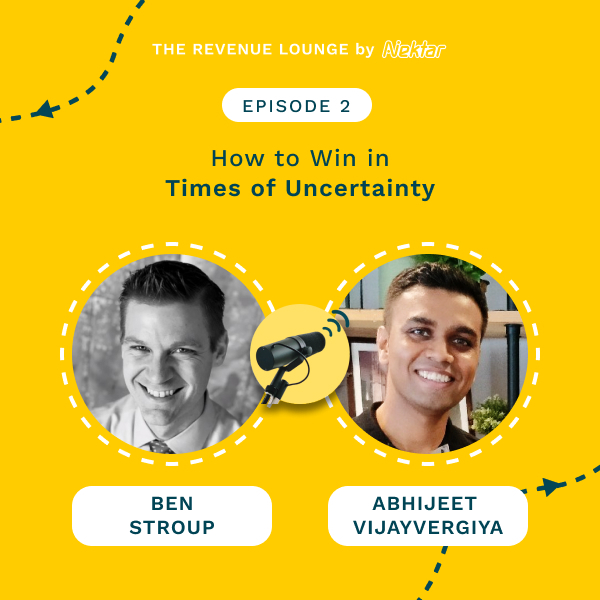
Ep #2: How to Win in Times of Uncertainty
Listen Now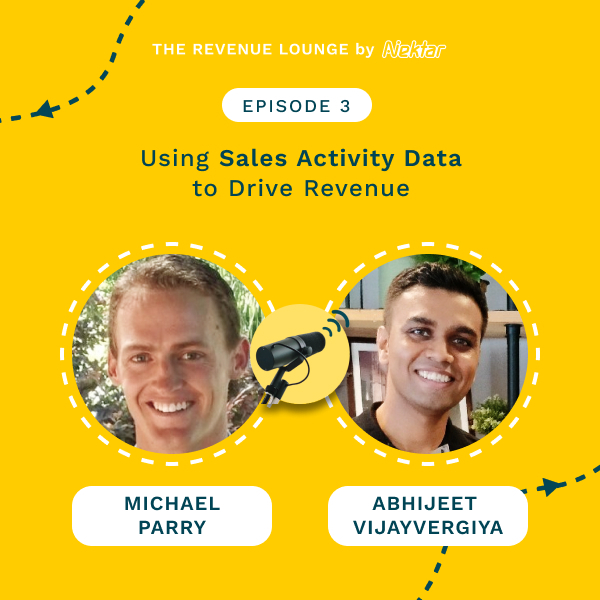
Ep #3: Using Activity Data to Drive Sales Productivity
Listen Now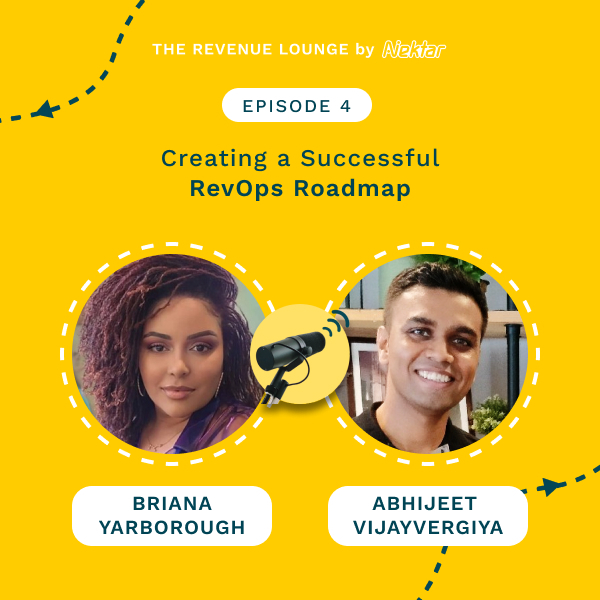
Ep #4: Creating a Successful RevOps Roadmap
Listen Now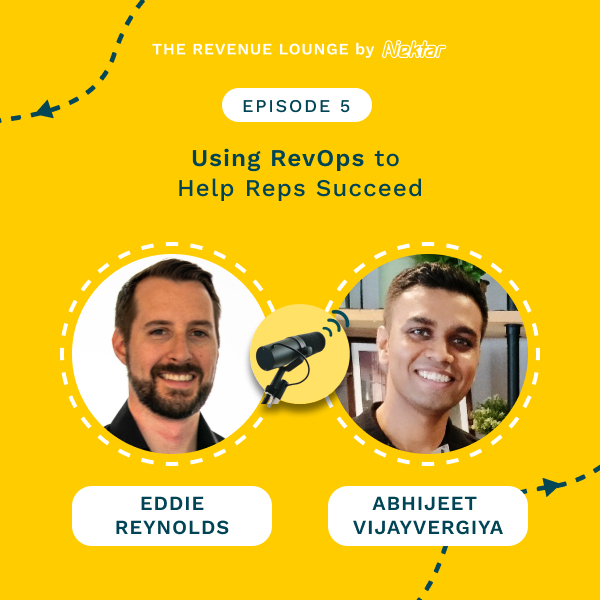
Ep #5: Using RevOps to Help Reps Succeed
Listen Now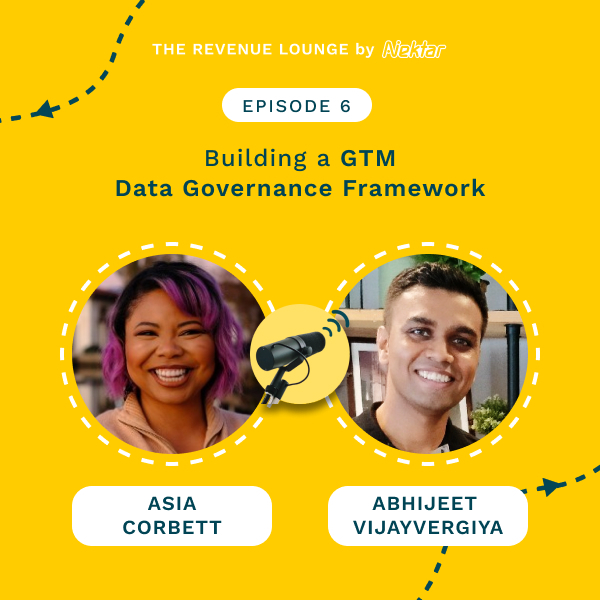
Ep #6: Building a GTM Data Governance Framework
Listen Now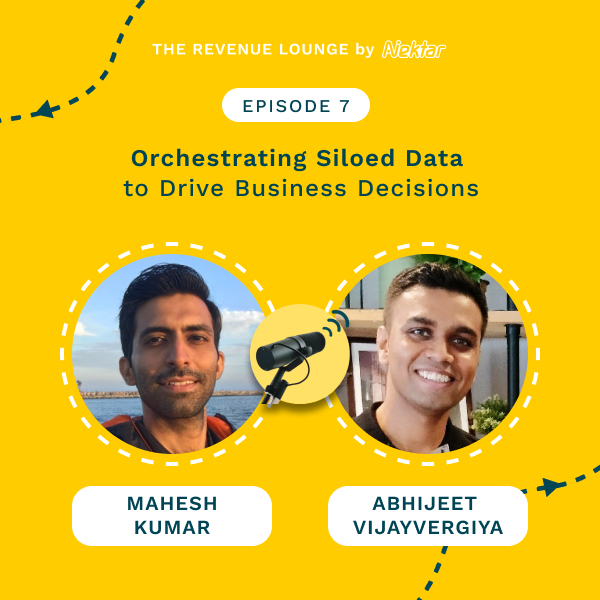
Ep #7: Orchestrating Siloed Data to Drive Business Decisions
Listen Now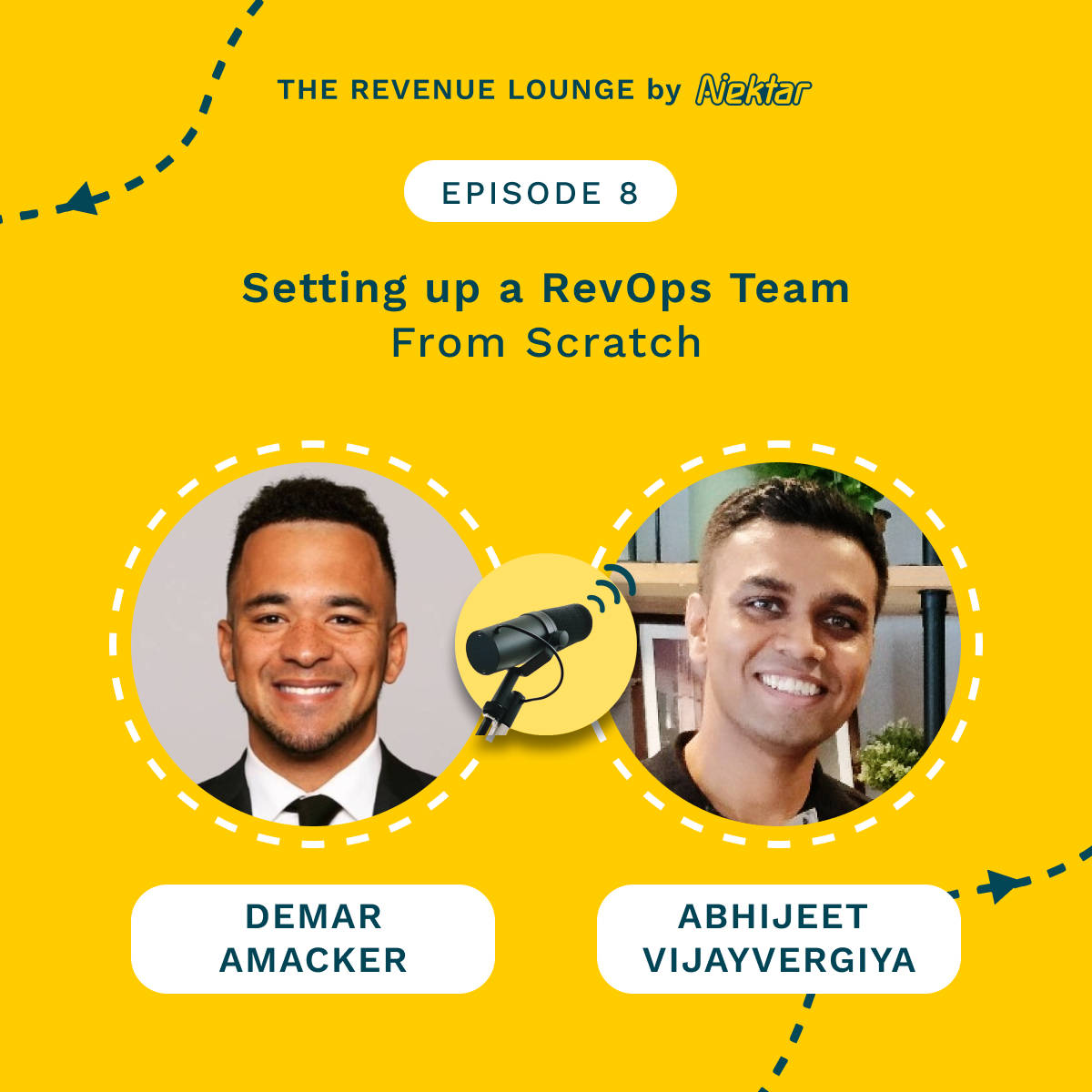
Ep #8: Setting Up a RevOps Team From Scratch
Listen Now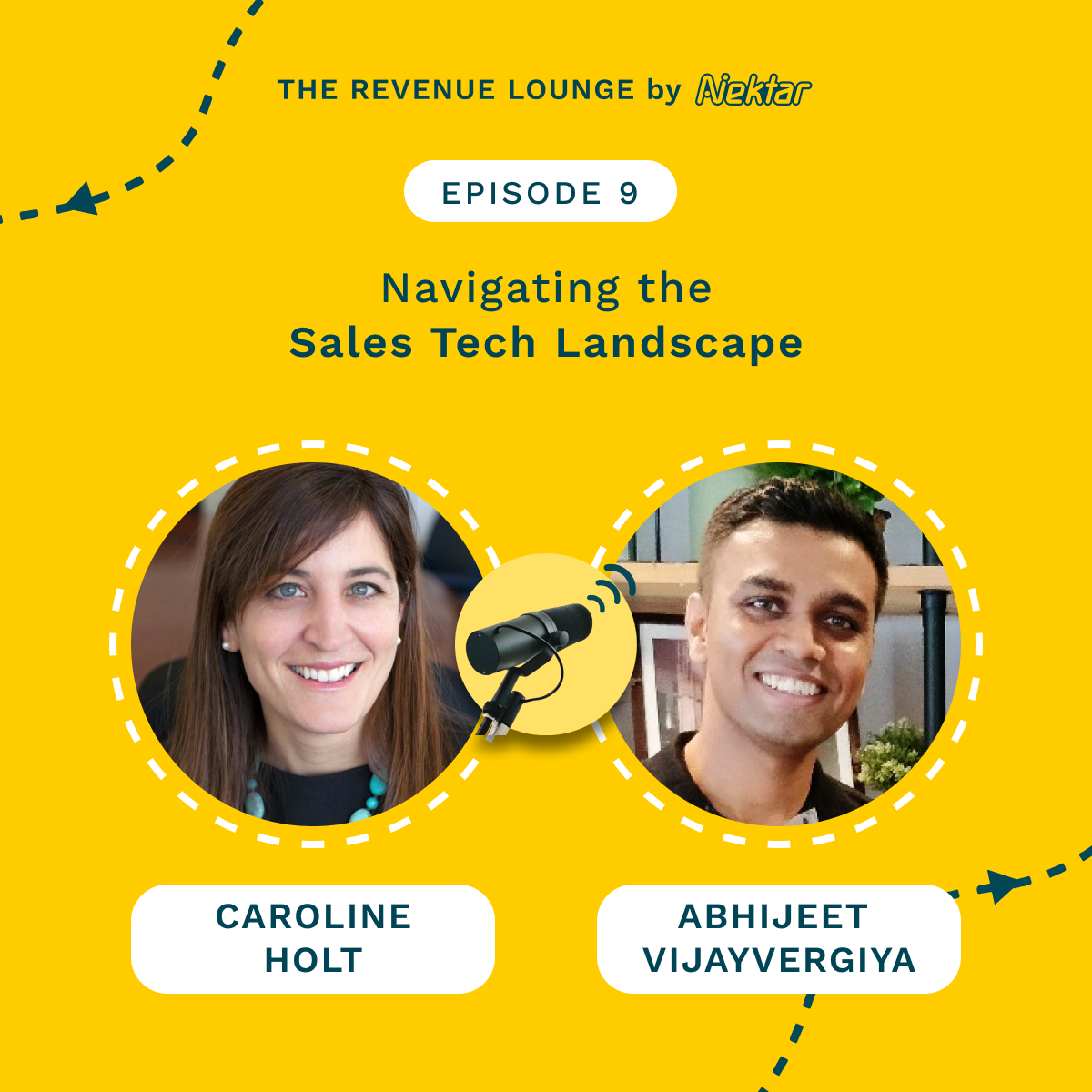
Ep #9: Navigating the Sales Tech Landscape
Listen Now